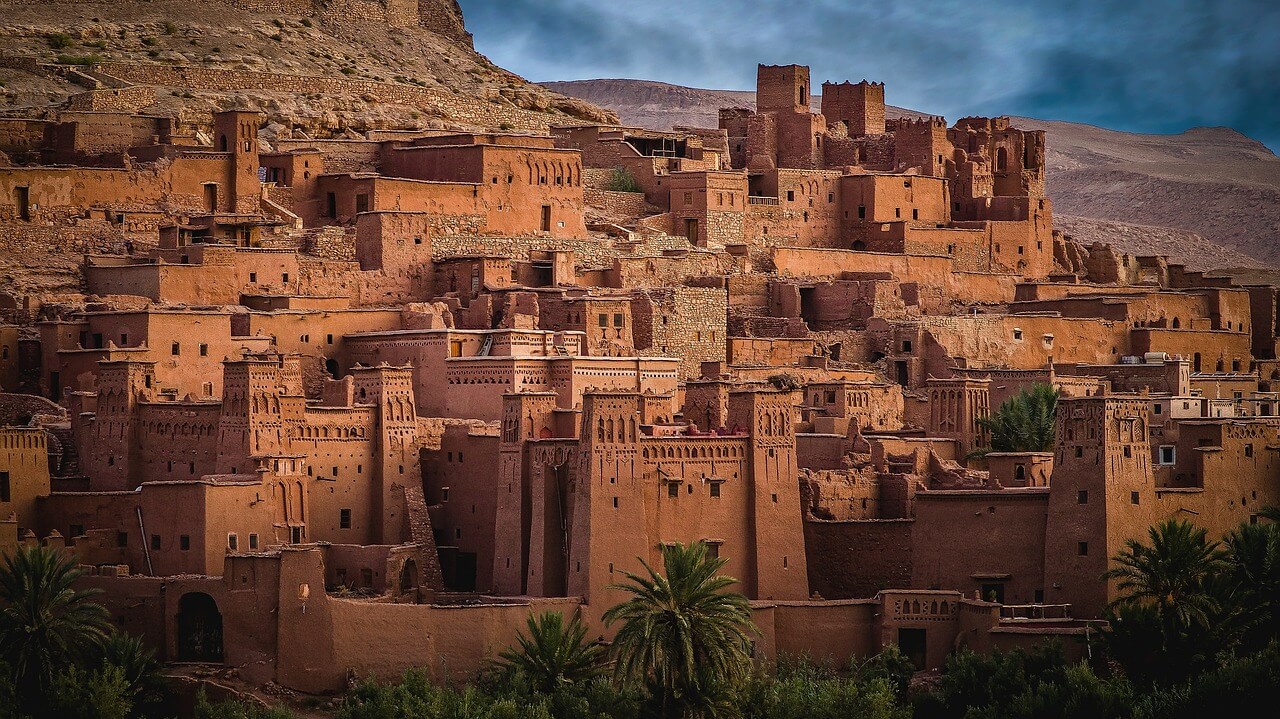When to visit Morocco during the year?
Morocco boasts a diverse climate, making it a year-round destination. The best time to visit is from March to May and September to November when temperatures are mild. In summer (June to August), the coastal areas like Essaouira and Agadir attract sun-seekers, while the interior can be unbearably hot. Winter (December to February) brings cooler temperatures, especially in the mountains, where skiing in locations like Ifrane is popular. Each season offers unique experiences, from hiking in the Atlas Mountains during spring to exploring the vibrant souks in Marrakech in the autumn.
How to get to Morocco?
Reaching Morocco is quite convenient, with several transport options available. Major cities like Casablanca and Marrakech serve as key entry points for international travelers.
- Airports: Mohammed V International Airport (CMN) in Casablanca, Marrakech Menara Airport (RAK), and Fès–Saïs Airport (FEZ).
- Main routes: Direct international flights from Europe (e.g., London Heathrow, Paris Charles de Gaulle), North America (e.g., New York JFK), and Asia (e.g., Dubai International).
- Low-cost airlines: Ryanair, EasyJet, and Air Arabia offer affordable options within Europe.
- Flight times: Approximately 2-3 hours from Europe, 8-9 from North America, and 6-7 from the Middle East.
- Main stations: CTM and Supratours are the leading bus companies, operating from major cities like Casablanca, Marrakech, and Fès.
- Connections: Buses frequently connect cities like Tangier, Rabat, and Agadir with reasonable prices and schedules.
- International traffic: There is train service from Spain via ferry to Tangier.
- Duration and routes: Trains connect major cities like Rabat, Casablanca, and Marrakech with comfortable and efficient services.
- Main highways: The A1 and A3 connect major cities, facilitating easy travel.
- Distances: Tangier to Casablanca (~340 km), Marrakech to Essaouira (~190 km).
- Tolls: Some highways have tolls; check local regulations for updates on road conditions.
Tourist activities in Morocco
Morocco is a land of contrasts, offering a myriad of activities for every traveler. For those drawn to history, cities like Marrakech and Fès boast ancient medinas with stunning architecture and bustling markets. Nature enthusiasts can explore the Sahara Desert through guided camel treks or hike in the Atlas Mountains, where breathtaking landscapes abound. Surfing in Taghazout and relaxing on the beaches of Agadir provide coastal fun, while cultural experiences like traditional Moroccan cooking classes in Marrakech or visiting Berber villages offer unique insights into local life. Don't miss the vibrant nightlife in Casablanca, or a relaxing spa day at a hammam. Each region presents a unique flavor of Morocco's diverse offerings.
Accommodation in Morocco
Morocco presents various accommodation options to suit every traveler's budget. From luxurious resorts like the La Mamounia in Marrakech to budget-friendly hostels, options are plentiful. Riads, traditional Moroccan guesthouses, offer an authentic experience with average prices around $50-200 per night, depending on the opulence. Boutique hotels and eco-lodges are also found in rural areas. Expect seasonal variations: peak tourist season may result in price increases, especially in summer and during festivals. For travelers desiring a unique stay, consider renting traditional villas or serviced apartments in cities like Marrakech.
Food in Morocco
Moroccan cuisine is famous for its bold flavors and rich traditions. Staples include tagine, a slow-cooked stew often featuring lamb or chicken, and couscous, which is typically served on Fridays. Dishes like pastilla (a sweet and savory pie) and harira (a nourishing soup) are also must-tries. Wash it down with sweet mint tea or local wines. Street food is abundant, with options like kebabs and msemen (flaky pancakes) widely available at low prices, with average meals costing around $5-15. Explore local markets and restaurants in cities like Marrakech for an authentic culinary experience.
Important numbers and information
- Emergency services: Police - 19, Ambulance - 15, Fire Brigade - 19
- Embassy contact: U.S. Embassy in Rabat - +212 5376-2000
- Airports: Mohammed V International Airport, Casablanca - Airport Road, 2, Casablanca
- Currency: Moroccan Dirham (MAD), payment methods: Cash widely accepted, credit cards at major establishments;
- Visa requirements: Most visitors need a passport valid for at least six months; check specific visa regulations prior to travel.
What to see in Morocco?
Morocco is bursting with breathtaking sites. Start your journey in Marrakech, where the lively Djemaa el-Fna square, Majorelle Garden, and historic palaces await. Fès is perfect for history buffs, with its well-preserved medina and ancient madrasas. The coastal city of Essaouira enchants with its fortified walls and vibrant arts scene. In the north, explore the dramatic cliffs of Tangier and its rich history. Don’t forget to visit the majestic Sahara Desert for sunset camel rides and starry nights, and consider a trip to Chefchaouen for its famous blue streets. Each location encapsulates Morocco's unique charm and heritage, making them worthwhile stops on your adventure.
History, geography and climate
Morocco's history is rich, influenced by Berber, Arab, and European cultures. The ancient Romans established cities like Volubilis, while the Islamic conquest in the 7th century significantly shaped its identity. Geographically, it features stunning landscapes ranging from the Atlas Mountains to the Sahara Desert. The Mediterranean and Atlantic coasts provide picturesque shores. Morocco experiences a varied climate: coastal areas enjoy mild, wet winters and hot summers, while the interior can be more extreme, with average temperatures ranging from cooling periods of 5°C in winter to soaring 40°C in summer.
Population and culture
With a population of over 36 million, Morocco boasts a blend of cultures and languages. Arabic is the official language, with Amazigh spoken by many, and French widely used in business. The dominant religion is Islam, and cultural traditions are deeply rooted in the country's history. Major holidays include Eid al-Fitr and Eid al-Adha, celebrated with family and communal activities. Unique cultural features include vibrant arts and crafts, traditional music, and festivals showcasing local heritage. Moroccan hospitality is famous, offering visitors a warm welcome and a glimpse into daily life.








